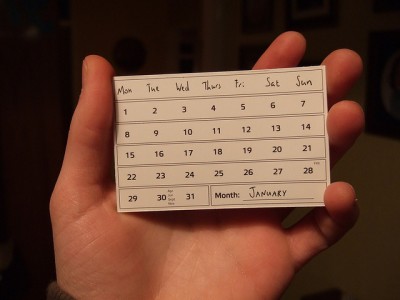
The Year
The Jewish calendar is a lunar calendar, based on the cycle of the moon around the earth. This cycle takes twenty-nine and a half days, so the months are alternately twenty-nine or thirty days, except for Cheshvan and Kislev, which can be either twenty-nine or thirty days. [1] There are twelve months in a regular year and thirteen months in a leap year.
The Torah requires that the Jewish festivals fall not only on the same date each year but also at the same season. Thus, the lunar cycle needs to be maintained in line with the solar cycle, which determines the seasons. However, the solar year of 365 days is eleven days longer than twelve lunar cycles. Accordingly, an extra month, Adar II, is added to the year, making a leap year seven times every nineteen years. In this way, the coincidence between the two cycles is maintained. [2]
The Week
The days of the week are called yom rishon, yom sheini, yom shelishi, yom revi’i, yom chamishi, yom shishi, and Shabbas Kadesh. Thus, the days of the week lead up to and revolve around Shabbos. [3]
The Day
The day begins at alos hashachar, when the first rays of light appear on the horizon in the morning. This is followed by neitz hachamah, the moment when the crescent of the sun appears on the horizon. The sun moves up from the horizon and when the sun reaches halfway across the sky it is called chatzos hayom, or midday. The sun continues to move across the sky, eventually setting in the west. The moment the sun has entirely submerged below the horizon is called shekias hachamah, or “sunset.” As the sun continues to sink further below the horizon, the sky continues to darken and it becomes night, the start of a new halachic day.
Please click here to continue reading, The Foundation of the Jewish Year.
Endnotes
[1] The exact length of each month is 29 days, 12 hours, and 44 minutes. Thus, the months are alternately 29 or 30 days.
[2] In each nineteen-year cycle, the leap years are the 3rd, 6th, 8th, 11th, 14th, 17th, and 19th year.
[3] We count each day of the week in the Shir Shel Yom at the end of Shacharis every day, leading up to Shabbos Kodesh.
OlamiResources.com is greatly appreciative to Rabbi Akiva Aaronson for sharing three free chapters from his important recent sefer, The Foundation of Judaism. The sefer offers educators and their students an overview of basic concepts of Judaism and Jewish life, focusing on emunah, Jewish history, lashon HaKodesh, Tefillah, Torah study, Torah transmission, the Jewish calendar, Shabbos and Kashrus. Torah U’Mesorah stated that this sefer offers “a lucid and concise resource for those who teach any age.” Hamodia said the book is “a veritable goldmine.” This week we have published the third of three installments – the chapter titled, “The Foundation of the Jewish Year.” Please click here to purchase The Foundation of Judaism. For further information and Rabbi Aaronson’s additional publications, please see Akiva-Aaronson.com.



















